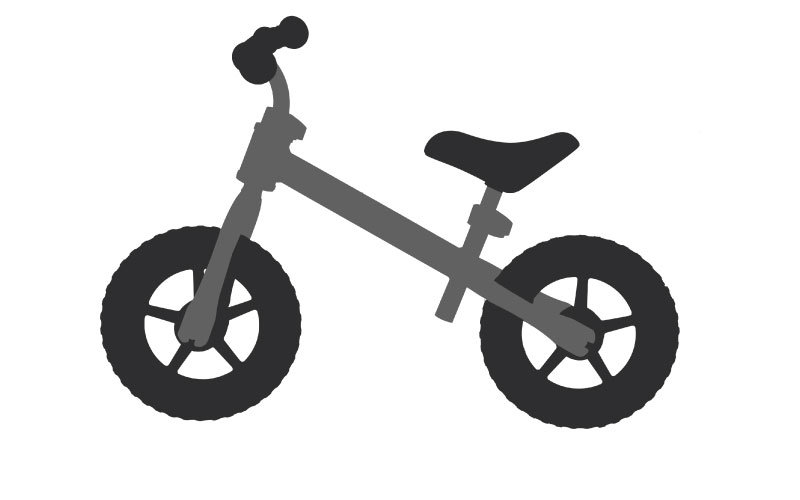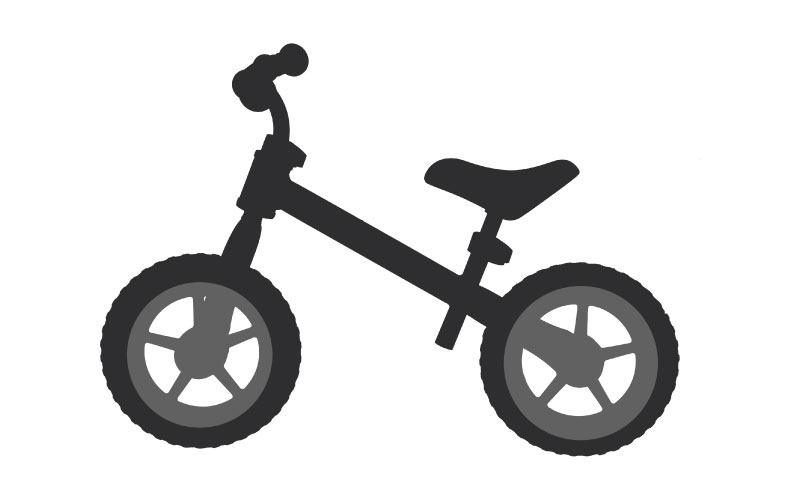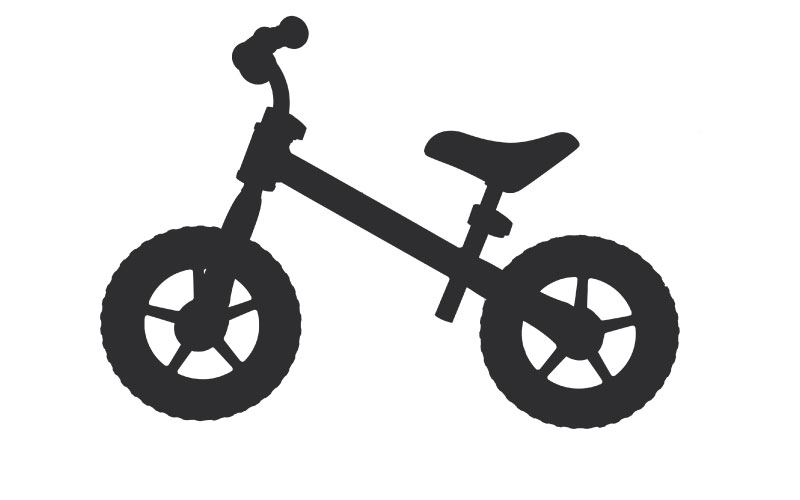Suitable:
Most balance bikes are suitable for children from around 2-4 years old. However, most of all, whether a balance bike is suitable or not - depends on the size of your child. A good rule of thumb is that your child should be able to get on and off the balance bike themselves, and easily touch the ground with their feet when sitting on the seat.
Lenght:
The total length of the balance bike, is from the rear wheel to the front wheel. Not so important in terms of your choice of a balance bike for your child, but still tells something about the size of the balance bike. The longer a balance bike is, the higher or larger it is likely to be as well.
Seat height:
It is important that you choose a balance bike where the seat height matches your child's height. Some balance bikes have a seat that can be adjusted in height, which means that your child will be able to use it for a longer period of time. This is especially smart, as children aged between 2-4 years grow quickly and therefore will also need a seat at a higher height.
Total height:
The total height of the balance bike measures from the ground up to the top of the handlebars. It is important to choose a balance bike of a height that fits your child's size. Typically, one can assume that if your child's inseam length is 25 cm from inseam to the ground, then the height of the balance bike must be 23 cm - meaning 2 cm lower.
Material:
The material says something about the quality and durability of the balance bike. However, since running bikes are for children, the materials they are made of should not be too heavy either. Therefore, a material such as aluminum is a good material for a quality balance bike, which at the same time must be able to handle a little of everything, a playful child can expose it to. The cheapest balance bikes are typically made of some form of plastic, and although this is extremely light material, balance bikes of this are not nearly as durable as those of aluminum.
Weight:
The total weight of the balance bike measured in grams. Products such as balance bikes are for children, and therefore it is essential that the weight isn't too heavy, as the child may find it more difficult to steer around with their balance bike. The weight also tells something about the quality of the balance bikes, as a lightweight plastic balance bike weighs less than one of aluminum. However, the durability is higher for the aluminum balance bike. Although, the weight depends on more things than the material, as certain design techniques can strengthen and / or make a balance bike lighter in weight.
Max load:
The maximum load measured in kilograms that the balance bike can handle. This maximum load for a balance bike is the manufacturer's own recommendation for what the balance bike can handle in weight. Exceeding this may mean that the product will not run as well as otherwise, or in the worst case break due to continuous overload.
Number of wheels:
Balance bikes are available with a different number of wheels. At first when your child is around 1 year old they will get the most out of a balance bike with 3-4 wheels. This is because their balance skills need to be trained a bit before they will be ready and big enough for a 2-wheeled balance bike. 2-wheeled balance bikes can get more speed, so it can be smart to start out on a slightly softer surface such as grass or alike.
Wheel diameter:
The diameter of the wheels measured in millimeters. Larger wheels generally provide better riding characteristics in terms of comfort and speed. Whereas smaller wheels have easier steering and faster reaction in the event of sudden turns and / or oscillations. For balance bikes to children, it is good with larger wheels, so that the child's riding pleasure and comfort is maintained.
Wheel material:
The wheel material for balance bikes varies a lot. It can be general tires that need to be inflated or made of durable plastic materials, such as EVA. The advantage of EVA is the flexibility and softness of the material. EVA also does not weigh as much as other wheel materials, which is good for balance bikes made for children.
Core material:
The core material for balance bike wheels is typically nylon or aluminum. Both materials have their qualities in relation to the balance bike as a whole. Aluminum is stronger and more durable, but nylon is significantly lighter in weight. Compared to balance bikes for children, nylon is good if you want a lighter balance bike for general fun and play.
Ball bearings:
The quality of ball bearings is found by looking at the division in ABEC and the given numerical value. The higher a numerical value, the better the quality of the ball bearings. For example, ABEC-7 ball bearings are of better quality than ABEC-5 ball bearings. However, ball bearings also depend on your use and needs.
Assembly:
Balance bikes can come in different levels of joints. Typically, you buy either a balance bike as partially assembled or completely assembled. Partly means that individual screws and other things must be screwed on or tightened. However, if a balance bike is completely assembled, it may still be a good idea to check for loose screws or something else, as a result of the shipping of your balance bike.












































